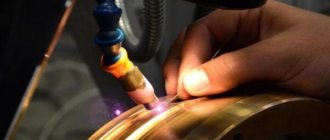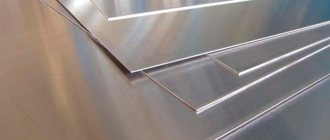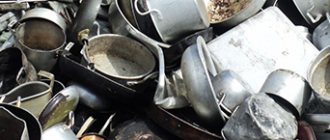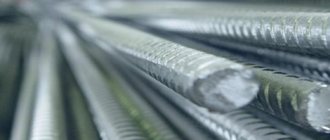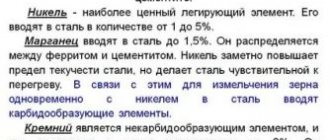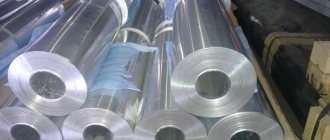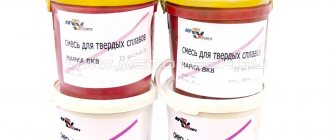Home / Directory / Classification and application of bronzes
When marking bronze, certain rules are adopted: Br (the first two letters) - bronze, then letters indicating a list of alloying elements in descending order of their content, and numbers corresponding to their percentage percentage. Alloys based on tin and lead with the addition of copper are called babbitts. They are very expensive, so they are most often replaced with aluminum alloys. Bronzes are divided into tin and tin-free.
Tin bronzes
The main alloying elements of tin bronzes are zinc, nickel and phosphorus. The zinc content is up to 10 percent, while the properties of bronze remain virtually unchanged, but the price decreases. Lead and phosphorus improve the anti-friction properties of bronze and its machinability.
Application of some types of cast tin bronzes
Wrought Bronzes:
— BrOF6.5-0.4 – springs, membranes, antifriction parts, liners
— BrOTs4-3 – flat and round springs and spring contacts
— BrOTsS4-4-2.5 – antifriction parts, bushings, couplings, shirts, etc.
Casting bronzes:
— BrО3Ц12С5 – general purpose fittings
— BrO5TsNS5 – antifriction parts, bearing shells, separators
— BrO4Ts4S17 – antifriction parts: bushings, bearings, bearing separators, liners, gears, worm pairs, etc.
Application[ | ]
A 1 hryvnia coin made from this material
Aluminum bronzes are most often used in equipment, where, due to their resistance to corrosion, they have an advantage over other structural materials. This should include bearings and landing gear parts in aircraft, assembly units in engines (especially for sea vessels), submerged structural elements of ship hulls, and ship propellers.
Aluminum bronze, due to its beautiful golden-yellow color and high corrosion resistance, is also sometimes used as a replacement for gold in jewelry and coins[5].
Aluminum bronzes are in greatest demand in the following areas:
- in the manufacture of equipment operated in marine conditions;
- in water supply equipment;
- in the oil and petrochemical industry (for example, for the manufacture of tools used in explosive environments);
- for the manufacture of equipment operated in corrosive environments;
- for the manufacture of decorative elements of building structures.
Widely used for the manufacture of small mechanical engineering parts (bushings, gears, flanges). The positive qualities of aluminum bronze over tin bronze are:
- less tendency to intracrystalline liquation;
- high density of castings;
- higher strength and heat resistance;
- less prone to cold brittleness.
The main disadvantages of aluminum bronzes over tin bronzes:
- significant shrinkage:
- tendency to form columnar crystals during crystallization and grain growth when heated, which greatly embrittles the alloy;
- strong gas absorption of the liquid melt;
- self-tempering with slow cooling;
- insufficient corrosion resistance in superheated steam.[6]
Aluminum bronze can be welded in an inert gas environment (argon).
Tin-free bronzes
There are grades of bronze that do not contain tin. These are binary or multicomponent alloys of copper with aluminum, manganese, iron, lead, nickel, beryllium or silicon.
Properties of aluminum bronzes: good resistance to corrosion in sea water, high mechanical properties, good ductility, high density. Properties of silicon bronzes (containing nickel and manganese): high mechanical strength and ductility, good mechanical and anti-corrosion qualities. Properties of beryllium bronzes: improved corrosion resistance and weldability. Properties of lead bronzes: excellent anti-friction properties, good thermal conductivity.
Applications of tin-free bronzes:
Ecology DIRECTORY
Bronze is an alloy of copper with tin and other metals. Depending on the composition, bronzes are divided into tin-bearing and tin-free (aluminum, silicon, lead).[...]
Aluminum bronze is an alloy of copper with aluminum and some other metals. It has high strength, ductility, and corrosion resistance. However, the casting properties of this alloy are worse than those of tin bronze.[...]
Aluminum bronze is soluble in acids and alkalis and should therefore only be used with neutral binders; It reacts with water even at normal temperature, releasing hydrogen.[...]
Aluminum bronze, unlike other pigments, consists of particles in the form of flat, smooth flakes. Aluminum bronze flakes have a diameter of 50-100 and a thickness in the range of 0.1-1.75. The specific gravity of bronze is 2.54–2.55, bulk density is 0.6–0.7. The hiding power of aluminum bronze is very high and amounts to about 10 g/m2 for different grades. Such a high hiding power of bronze is explained by the ability of its particles to be located in the upper layer of the film, their surface parallel to the surface of the film, and specularly reflect up to 75-80% of the light incident on them. Aluminum bronze particles are not transparent not only to light rays, but also to ultraviolet and infrared rays.[...]
Copper and aluminum bronzes are widely used as pigments. So-called copper bronzes are made by grinding various copper alloys and are used primarily as decorative pigments and to imitate gilding. Aluminum bronzes are used less frequently for decorative purposes. However, the exceptional properties of paints containing aluminum bronzes as pigments have contributed to their widespread use.[...]
In dry form, aluminum bronze can be preserved for a long time, but when stored in the form of paint, the latter thickens and loses its color. Therefore, bronze is delivered to consumers either in dry form or. in the form of pastes consisting of bronze mixed with a solvent. Bronze should be added to the binder only before using paint.[...]
Lead bronze and aluminum alloy are stronger and more refractory, but have worse anti-friction properties than babbitt. Bearings and liners filled with these alloys require careful adjustment to the shaft journal.[...]
The higher the ability of aluminum bronze to float, the higher its pigment properties.[...]
A major disadvantage of aluminum bronze is its ability to explode when mixed with air during production. The study of the causes of the explosions led to the assumption that they consist in the accumulation of static electricity on individual bronze particles, as a result of which a spark can jump between them when the particles approach each other. To prevent sparking, it was recommended to increase the load of the grinding equipment.[...]
The high pigment properties of aluminum bronze are a consequence of its opacity to light and ultraviolet rays, and, in addition, the ability to specularly reflect light, ultraviolet and thermal rays.[...]
Metal, and in particular aluminum, powders and bronzes are products obtained by finely grinding the corresponding metals. The difference between powders and bronzes lies in the shape of their particles: powders consist of particles of irregular shape, characteristic of particles of powders of other substances, and particles of bronzes are flat flakes. [...]
When aluminum powders obtained by pulverization or centrifugal grinding of molten metal are used for the production of bronze, products are always formed that are less suitable for use in the paint and varnish industry than bronzes made by grinding foil or its scraps. In practice, instead of foil, rolled aluminum is successfully used, the thickness of which is 4-5 times greater than the thickness of foil.[...]
The technological process for producing aluminum bronze is very simple and boils down to a series of mechanical operations, the purpose of which is to give bronze particles a specific flake shape. The whole process consists of grinding the metal and polishing the particles obtained by crushing the metal.[...]
This ability to reflect heat rays makes aluminum bronze an almost essential paint pigment for painting the fabric shells of airships and balloons. The use of aluminum bronze for these purposes is of particular importance, since gases have the highest expansion coefficients compared to liquids and solids. [...]
Due to its ability to reflect heat rays, aluminum bronze is widely used for painting railway tanks, oil tanks, refrigerator cars and other objects that need to be protected from heating by the sun's rays. The extent to which painting with aluminum bronze can protect an object from heating by the sun's rays can be judged by the practice of railways, which managed to reduce the temperature inside refrigerator cars by 10° by painting their roofs with aluminum bronze. Such painting of railway tanks for transporting gasoline and gasoline storage facilities can greatly reduce gasoline losses caused by heating of tanks and storage facilities by the sun's rays. [...]
Over the past decade, aluminum powders, which in paint and varnish technology are called powders or bronzes, have found great use as pigments. The wide distribution of these pigments is explained by the scaly shape of their particles. When applying aluminum paint to the surface to be painted, aluminum particles are located parallel to the surface of the paint layer. Being miniature mirrors, such particles specularly reflect all the light falling on them, especially short-wavelength, and greatly slow down the aging process of the paint film, and, consequently, extend its service life. In addition, the reflection of red light and infrared rays prevents the painted product from heating up. This last circumstance is widely used by the oil industry and transport. Painting oil and gasoline storage facilities, as well as railway tanks, with paint containing aluminum powder as a pigment protects them from heating by the sun's rays and thus reduces the evaporation of the most expensive volatile fractions.[...]
To determine the degree of floatation, these researchers recommend the following method. A 1.5 g sample of bronze is placed in a test tube and thoroughly mixed with 10 ml of varnish. The varnish is a 25% solution of coumaron resin in turpentine. After mixing the bronze with the varnish, a spatula, which is a polished steel plate 100-130 mm long, 10-12 mm wide and 0.5-1 mm thick, is immersed in the test tube. After 10 seconds, the spatula is slowly removed from the varnish and suspended in a vertical position. The surface of the spatula is covered with a layer of aluminum bronze. On the lower part of the spatula this layer has the character of a continuous coating; at some distance from the lower end, cracks appear on the surface coated with aluminum bronze. Attitude. the length of the film covered with a continuous layer of bronze to the total depth of immersion of the spatula, expressed as a percentage, and characterizes the floating of bronze.[...]
The main disadvantage of all babbitts is their low impact strength. Therefore, in cases where the load-bearing load exceeds 10 MPa, lead bronze - BrS-30 (contains 30-33% lead) or aluminum alloy - ASM (aluminum, antimony, magnesium) is used [...]
The main antifriction alloys used for casting bearings and sliding liners of internal combustion engines, machine tools, winches, rolling stock, etc. are babbit, lead bronze and aluminum alloys. The chemical composition of antifriction alloys (in percent) is given in table. 18.1.[...]
There are plants for primary and secondary processing of non-ferrous metals. Primary processing plants (rolling, drawing, pressing) produce flat and round rolled products from heavy non-ferrous metals, complex alloys and rolled aluminum foil. Secondary processing plants (foundries) produce mainly aluminum and bronze-brass castings. [...]
Many attempts have been made to relate erosion resistance to some mechanical property of the material. The authors of [7, 61, 86, 90] and a number of other authors discovered a connection between erosion resistance and hardness. A discussion of these results can be found in Heiman's work [77]. Based on data from several sources, he found that erosion resistance on average varies proportionally to hardness to the power of 8/3. Heyman found that cobalt alloys and bronze are more resistant than steel, and that the erosion resistance of cast iron and aluminum alloys is less than expected expect based on their hardness. Nickel alloys have a wide range of results. In general, the scatter of results is quite significant, and the above power law reveals only a general trend.[...]
Marking of bronzes
| Tin-free (GOST 493, GOST 17328, GOST 18175) | |
| Brand | Brief brand designation |
| BrA5 BrA7 | BA5 BA7 |
| BrAZh9—4; BrA9ZhZL; BrA10ZhZ; BrA10ZhZr | BAJ |
| BrAZHN10—4—4; BrAZHNMts9—4—4—1; BrA10Zh4N4L; BrA9Zh4N4Mts1; BrA11ZhbNb | BAJN |
| BrAZhMts10—3—1.5; BrA10ZhZMts2 | BAZHMts |
| BrMts5 BrKd1 BrB2 | BMC BKd BB |
| BrBNT1.7; BrBNT1.9; BrBNT1.9Mg | BBN |
| BrKN1-3 BrKMtsZ—1 BrMg0,Z BrSr0.1 BrKh1 | BKN BKMts BMg BSr BHR |
| BrH1Tsr; BrKhTsrKa; BrTsr | BTsr |
| BrAMts10-2; BrA10Mts2L; BrAMts9—2; BrA9Mts2L | BAMts |
| BrA7Mts15ZhZN2Ts2 BrS30 BrSuZNZTsZS2OF BrNK1.5—0.5 | BAMts15 BS BSuS BNK |
| Tin (GOST 613, GOST 5017) | |
| Brand | Brief brand designation |
| Br0ZTs12S5 | B0Z |
| BrOTsS4—4—2.5; BrOTsS4—4—4; Br04TS7S5 | B04 |
| Br05TS5S5 | B05 |
| Br06TS6SZ; Br06Ts6S2x | B06 |
| Br0Ts4—3 Br08Ts4 Br010Ts2 Br0ZTs17S5N1 Br04Ts4S17 Br05S25 | B0TS4 B0TS8 B0TS10 B0ZN B04S B05S |
| Br08S12; Br08S21 | B08S |
| Br010S10 Br010F1 Br0F2—0.25 Br0F4—0.25 Br0F6.5—0.15 Br0F6.5—0.4 Br0F7—0.2 Br0F8.0—0.3 BrMts07—3 | B0S10 B0YU B0F2 B0F4 B0F6 B0F6 B0F7 B0F8 B0Mts |


